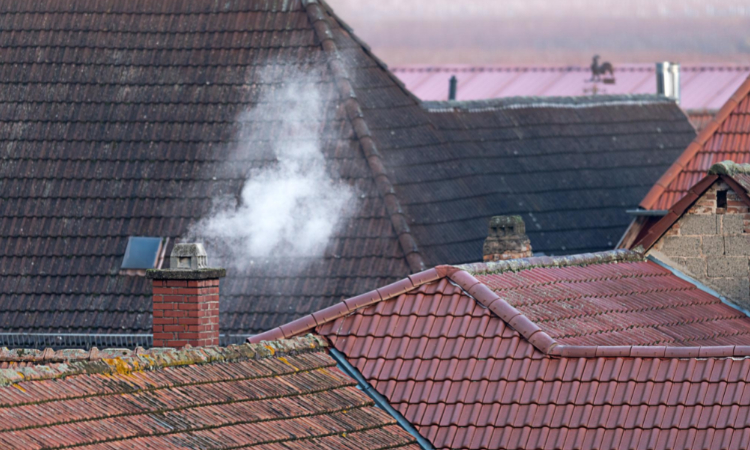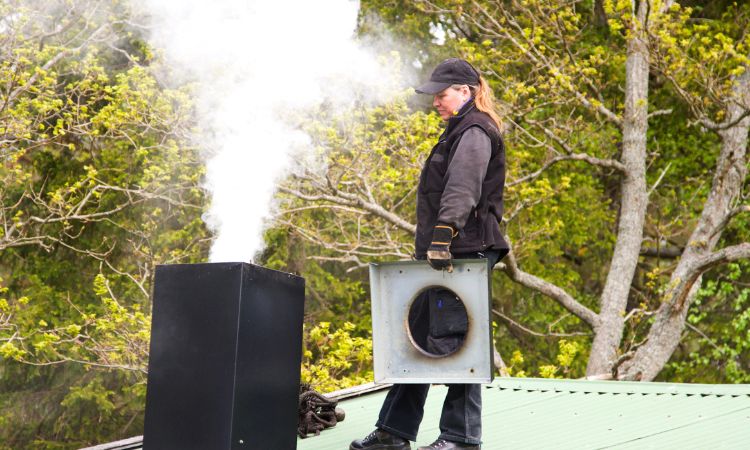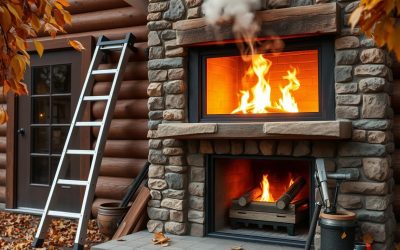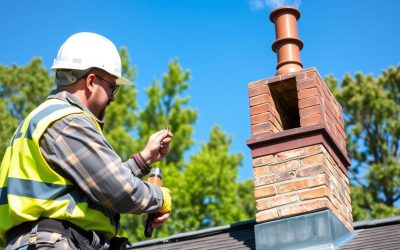A fireplace or stove can be a great addition to any home, providing warmth and ambiance during cold winter nights. However, if not used and maintained properly, it can also pose a serious safety hazard. In this article, we will provide practical advice on how to reduce the risk of chimney fires and carbon monoxide poisoning, including information on the proper use of fireplaces and stoves, and the importance of working smoke detectors.

Practical Advice for Reducing the Risk of Chimney Fires
Chimney fires are a serious and potentially deadly hazard, but they can be prevented with some simple steps. Here are some practical tips to reduce the risk of chimney fires:
Use seasoned firewood: When you burn green or unseasoned wood, it creates more creosote in your chimney, which can lead to chimney fires. Dry, seasoned wood burns hotter and cleaner, producing less creosote and reducing the risk of fire.
Have your chimney cleaned regularly: A chimney that is not cleaned regularly can accumulate a dangerous amount of creosote, which can ignite and cause a chimney fire. Experts recommend having your chimney cleaned at least once a year.
Use a chimney cap: A chimney cap is an important safety device that prevents debris, animals, and rainwater from entering your chimney. It also helps prevent sparks and embers from escaping and potentially igniting nearby combustibles.
Monitor your chimney temperature: If the temperature of your chimney is too high, it can ignite creosote buildup, causing a chimney fire. Use a chimney thermometer to monitor the temperature, and if it exceeds 200 degrees Fahrenheit, stop using your fireplace or stove and call a professional.
‘
Proper Use of Fireplaces and Stoves
Using your fireplace or stove improperly can also lead to chimney fires and carbon monoxide poisoning. Here are some tips on how to use them safely:
Never leave a fire unattended: Always keep a close eye on your fire and never leave it unattended. Sparks can fly and ignite nearby combustibles, or the fire could become too large and get out of control.
Use a fireplace screen: A fireplace screen is a simple safety device that prevents sparks and embers from escaping and potentially igniting nearby combustibles.
Don’t overload the fireplace or stove: Overloading your fireplace or stove with too much wood can create a fire that is too large and out of control. Follow the manufacturer’s guidelines for how much wood to use.
Don’t use flammable liquids to start a fire: Never use gasoline, kerosene, or other flammable liquids to start a fire in your fireplace or stove. These liquids can ignite suddenly and cause an explosion.

The Importance of Working Smoke Detectors
Smoke detectors are essential safety devices that can alert you to the presence of smoke and carbon monoxide. Here’s what you need to know about smoke detectors:
Install smoke detectors in every bedroom and on every level of your home: Smoke detectors should be installed in every bedroom and on every level of your home, including the basement. This ensures that you will be alerted to the presence of smoke or carbon monoxide no matter where you are in your home.
Test your smoke detectors regularly: Smoke detectors should be tested once a month to ensure that they are working properly. Replace the batteries at least once a year.
Replace smoke detectors every 10 years: Smoke detectors have a limited lifespan and should be replaced every 10 years, or sooner if they become damaged or stop working properly.
Have a carbon monoxide detector installed: Carbon monoxide is a colorless, odorless gas that can be deadly. Have a carbon monoxide detector installed in your home to alert you to the presence of this gas.
Keep your family safe with regular chimney cleaning and maintenance. Contact Chimney Sweep El Paso for professional chimney services.





0 Comments